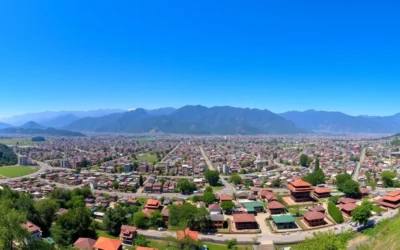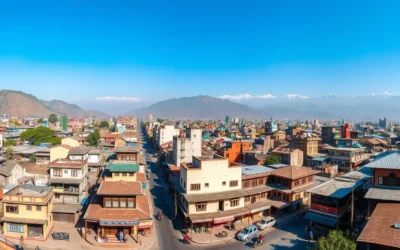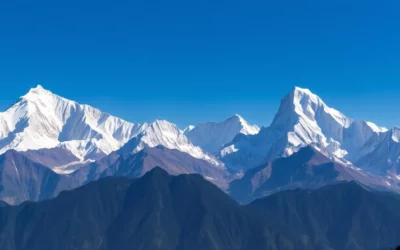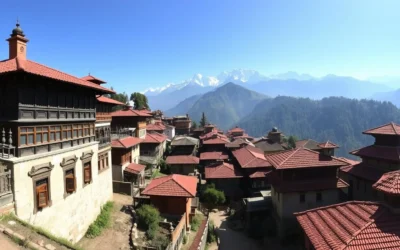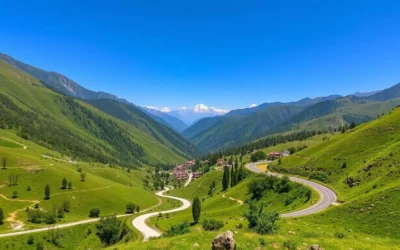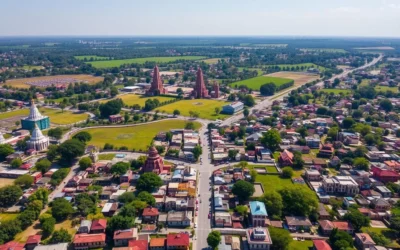Did you know that Biratnagar is home to Nepal’s first large-scale industry? Established in 1936, the historic Biratnagar Jute Mills sparked the country’s industrial revolution and continues to be a symbol of Nepal’s manufacturing heritage. As Nepal’s second-largest city and industrial capital, Biratnagar offers visitors a unique blend of cultural experiences, vibrant markets, and natural attractions that often get overlooked by travelers focused on Nepal’s more famous destinations.
Getting There & Planning Your Journey
Biratnagar is easily accessible by both air and road. The city has its own domestic airport (Biratnagar Airport) with regular flights from Kathmandu taking approximately 45 minutes. This is the fastest and most comfortable way to reach the city, especially during the monsoon season when road travel can be challenging.
If you prefer traveling by road, regular buses operate from Kathmandu to Biratnagar, with the journey taking around 10-12 hours. The East-West Highway connects Biratnagar to other major cities in Nepal, making it accessible from different parts of the country.
Ready to Visit Biratnagar?
Start planning your journey to Nepal’s industrial hub with these essential travel services:
Best Time to Visit Biratnagar & Weather Tips
Biratnagar experiences a subtropical climate with hot summers and mild winters. The city’s weather can significantly impact your travel experience, so timing your visit is crucial.
| Season | Months | Temperature | Conditions | Recommendation |
| Autumn | October-November | 20-30°C (68-86°F) | Clear skies, comfortable temperatures | Highly Recommended |
| Winter | December-February | 10-25°C (50-77°F) | Cool mornings/evenings, pleasant days | Recommended |
| Spring | March-April | 20-35°C (68-95°F) | Warming temperatures, occasional rain | Good |
| Summer | May-September | 25-40°C (77-104°F) | Hot, humid, monsoon rains | Not Recommended |
The best time to visit Biratnagar is from October to mid-March when the weather is clear and pleasant. Avoid the summer months (May-September) when temperatures can soar to 40°C (104°F) with high humidity, making outdoor exploration uncomfortable. The monsoon season (June-September) brings heavy rainfall, which can disrupt travel plans and limit outdoor activities.
Traveler Tip: November and February are ideal months to visit Biratnagar, offering the perfect balance of comfortable temperatures and clear skies for exploring the city and surrounding attractions.
Getting Around Locally

Navigating Biratnagar is relatively straightforward with several local transportation options available:
Safari (Electric Auto)
The most popular mode of transport in Biratnagar is the “Safari” – electric auto-rickshaws that serve as the city’s primary public transportation. You can either reserve one for a higher price or share with other passengers traveling the same route for a lower fare. They’re convenient, affordable, and environmentally friendly.
Traditional Rickshaws
Though less common now, traditional cycle rickshaws still operate in Biratnagar. Taking a rickshaw ride offers a slower but more authentic way to experience the city. Consider tipping the driver generously, as this traditional profession is gradually being replaced by motorized options.
Taxis
Taxis are available but less common in Biratnagar. They’re typically more expensive than safaris or rickshaws but offer more comfort and privacy. Always negotiate the fare before starting your journey, as meters are rarely used.
Rental Vehicles
For more flexibility, consider renting a car or motorcycle. This option is ideal if you plan to explore attractions outside the city, such as Koshi Tappu Wildlife Reserve or nearby towns.
Where to Stay in Biratnagar

Biratnagar offers a range of accommodation options to suit different budgets and preferences. Most hotels are concentrated around two main areas:
Roadcess Chowk Area
Located near the Biratnagar bus stop and city center, this area offers convenient access to markets, restaurants, and local attractions. You’ll find several mid-range hotels here with modern amenities and comfortable rooms.
Best for: Travelers who want to be in the heart of the action and close to shopping and dining options.
Airport Area
The area around Biratnagar Airport features several good hotels with easy access to transportation. This location is slightly quieter than the city center but still offers plenty of dining options nearby.
Best for: Business travelers or those with early flights who prefer a quieter environment.
Find Your Perfect Stay in Biratnagar
Browse a wide selection of hotels, guesthouses, and homestays to suit every budget:
Dining & Local Cuisine

Biratnagar’s food scene is a delightful mix of traditional Nepali cuisine and influences from neighboring India. The city is particularly known for its street food culture, which offers a variety of flavors that will tantalize your taste buds.
Must-Try Local Dishes
Chaat at Lovely Chaat House
A local institution, Lovely Chaat House serves what many consider the best chaat in Biratnagar. Their signature dish combines mashed samosas, bhujias, yogurt, and special spices to create a flavor explosion that locals and visitors alike crave.
Sel Roti
This traditional Nepali ring-shaped rice bread is a sweet, crispy treat often enjoyed with tea. In Biratnagar, you’ll find fresh sel roti at morning markets and street food stalls throughout the city.
Thakali Thali
A complete Nepali meal served on a single plate, featuring rice, lentils (dal), vegetables, pickles, and meat or fish. Several restaurants in Biratnagar serve authentic Thakali thali that showcases the diverse flavors of Nepali cuisine.
Street Food Highlights

Dining Tip: For an authentic local experience, visit one of the many chowks (public junctions) in the evening, where food vendors set up stalls offering a variety of street food. Devkota Chowk and Bargachhi are particularly popular spots for evening snacks and socializing.
Attractions & Sightseeing in Biratnagar
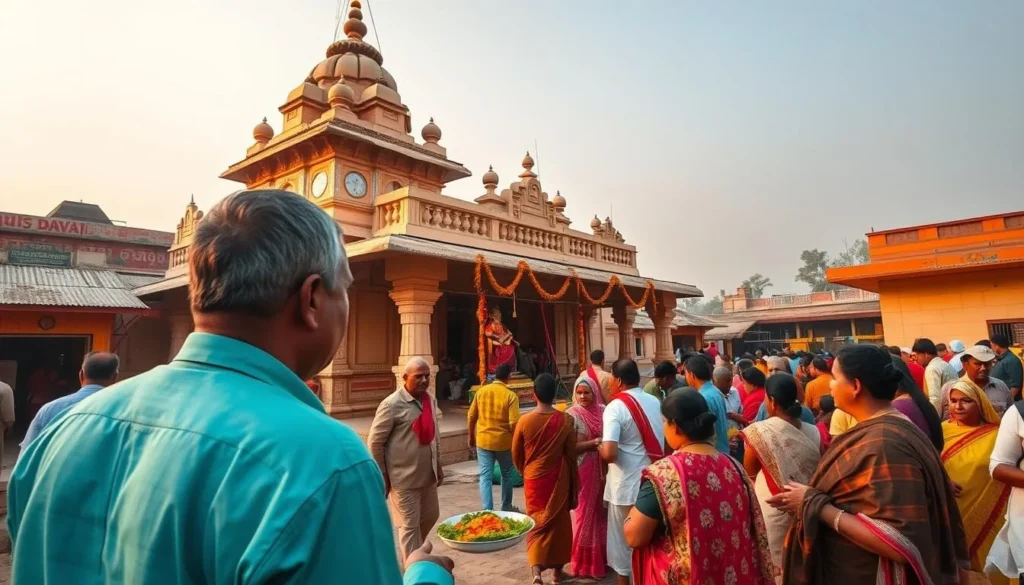
While Biratnagar may not be known as a traditional tourist destination, it offers several interesting attractions that provide insight into local culture, history, and daily life.
Religious Sites
Kali Mandir
One of the most important religious sites in Biratnagar, this temple dedicated to Goddess Kali attracts devotees throughout the day. Visit in the morning to witness locals offering prayers and flowers. The temple’s vibrant atmosphere provides a glimpse into the spiritual life of the community.
Location: Near Biratnagar Market
Baraha Chhetra
Located about 25 km (15.5 mi) from Biratnagar, this significant Hindu pilgrimage site sits at the confluence of the Saptakoshi and Koka Rivers. The temple is dedicated to Lord Vishnu’s boar incarnation (Barah) and features beautiful imagery throughout. The serene surroundings and the spectacular view of rivers meeting make this a worthwhile day trip.
Location: Sunsari District
Historical & Cultural Sites

Biratnagar Jute Mills
Established in 1936, this historic facility is Nepal’s oldest jute mill and the country’s first registered company. The mill played a crucial role in Nepal’s industrial development and continues to operate today. While not a traditional tourist attraction, history enthusiasts will appreciate its significance to Nepal’s economic evolution.
Location: Industrial Area, Biratnagar
Central Mall
A modern addition to Biratnagar’s landscape, Central Mall offers a glimpse into contemporary Nepali urban life. The 700-meter rectangular mall features a European-inspired design that has made it popular among locals and a frequent backdrop for Instagram photos. It’s a pleasant place to shop, relax with a coffee, or simply observe local life.
Location: Heart of Biratnagar
Explore Biratnagar With Local Guides
Discover hidden gems and learn about local culture with experienced guides:
Markets & Shopping Experiences

Biratnagar’s markets offer an authentic glimpse into local life and culture. From bustling bazaars to weekly farmers’ markets, shopping here is an experience in itself.
Biratnagar Market
The main commercial area stretches from Atithi Sadan to Roadcess Chowk. This vibrant market is filled with clothing stores, restaurants, and shopping malls. It’s the perfect place for an evening stroll, where you can observe local life and perhaps pick up some souvenirs.
Best time to visit: Late afternoon to evening
Gudri Bazaar
Originally started as a local hub for farmers and artisans, Gudri Bazaar has evolved into a bustling marketplace attracting people from across the region. Here you’ll find everything from clothes and electronics to household goods and local handicrafts. Don’t miss trying a refreshing lassi or sarbat (sweet drink) while exploring.
Best time to visit: Morning to mid-afternoon
Haat Bazaar (Weekly Markets)
These traditional weekly farmers’ markets take place in different neighborhoods throughout the week (hence their local names like “Aaitabare hatiya” for Sunday’s market). They offer fresh produce, spices, and street food, providing an authentic glimpse into local shopping traditions.
Locations: Chadani Chowk, Kanchanbari, Shani Chowk (ask locals for the schedule)
Shopping Tip: If you’re looking for unique items at competitive prices, consider a trip to Jogbani, just across the Indian border (about 45 minutes by bus). This shopping hub offers clothing, household items, and Indian products at lower prices than in Biratnagar. Remember to check import limitations before making large purchases.
Festivals & Cultural Experiences
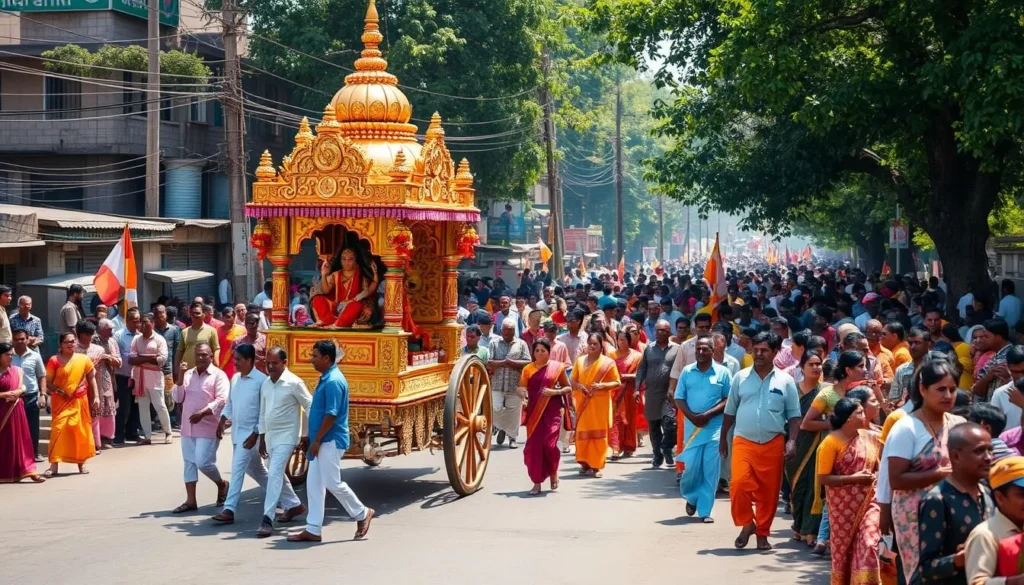
Timing your visit to coincide with one of Biratnagar’s festivals can add a memorable cultural dimension to your trip. These celebrations offer insight into local traditions and beliefs while providing colorful photo opportunities.
Rath Yatra
Celebrated the day after Krishna Janmashtami, this “Chariot Journey” features a cart believed to be driven by Lord Krishna (symbolized by a young child placed in the cart). Thousands gather to pull the chariot through the streets, creating an electric atmosphere. Many locals watch from balconies as the massive crowd moves through the city.
When: August/September (follows lunar calendar)
Jhulan at Radha Krishna Mandir
During Krishna Janmashtami, the Radha Krishna Temple is beautifully decorated with lights, and devotees gather for bhajans (devotional songs) and kirtans. The celebration marks the birth of Lord Krishna and creates a fair-like atmosphere in the surrounding area.
When: August/September (follows lunar calendar)
Chhath Puja
This important festival honors the Sun God and his sister Chhathi Maiya. Devotees fast and offer prayers at sunrise and sunset, often standing in water. The riverbanks are decorated, and participants stay awake overnight for worship. It’s a powerful demonstration of devotion and gratitude.
When: October/November (after Tihar festival)
Cultural Tip: When attending religious festivals, dress modestly (covering shoulders and knees), remove shoes when entering temples, and ask permission before taking photographs of ceremonies or individuals. Bringing a small offering of flowers or fruits when visiting temples is appreciated but not required.
Day Trips & Nearby Attractions

Biratnagar serves as an excellent base for exploring eastern Nepal’s diverse attractions. These nearby destinations make perfect day trips or overnight excursions.
Koshi Tappu Wildlife Reserve
Nepal’s smallest Terai national park is a birdwatcher’s paradise, home to nearly 500 species of birds and the endangered wild water buffalo (arna). During winter, migratory birds from Siberia and Tibet create a spectacular display. The reserve also shelters gangetic dolphins, marsh muggers, and various mammals.
Distance: About 50 km (31 mi) from Biratnagar
Best time to visit: November to February
Ilam
Famous for its tea gardens, this picturesque hill station offers stunning natural scenery with rolling hills covered in tea plantations. The misty landscapes and cool climate make it a refreshing escape from Biratnagar’s heat. Visit tea factories to learn about production processes and sample some of Nepal’s finest teas.
Distance: About 150 km (93 mi) from Biratnagar
Best time to visit: October to April
Dharan
This unique city offers three distinct characters: a western area with middle-class suburbs and golf courses, the famous Gurkha recruiting center, and the traditional Dharan Bazaar. The city is religiously significant as the site where Shiva’s first wife Sati was consumed by flames. Don’t miss the reclining statue of Shiva.
Distance: About 60 km (37 mi) from Biratnagar
Best time to visit: October to March
Explore Beyond Biratnagar
Make the most of your visit with guided tours to nearby attractions:
Practical Travel Tips
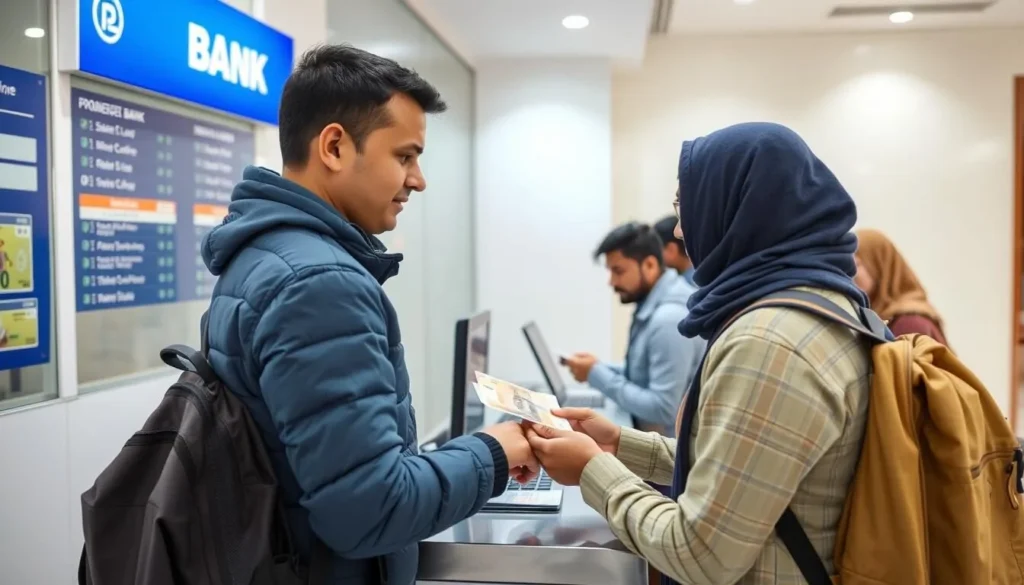
Safety & Etiquette
Health & Comfort
Currency & Communication
Money Matters
The Nepalese Rupee (NPR) is the local currency. ATMs are available in Biratnagar, but it’s advisable to carry some cash, especially when visiting markets or smaller establishments. Credit cards are accepted at larger hotels and restaurants but not widely used in smaller businesses.
Language Basics
Nepali is the official language, but many people in Biratnagar also speak Hindi and basic English. Learning a few Nepali phrases can enhance your experience:
- Namaste – Hello/Goodbye
- Dhanyabad – Thank you
- Kati ho? – How much?
- Ramro – Good
Ready to Explore Biratnagar?
While Biratnagar may not be on every traveler’s Nepal itinerary, this industrial hub offers authentic cultural experiences, vibrant markets, and a gateway to eastern Nepal’s natural beauty. From sampling delicious street food to witnessing colorful festivals and exploring historic sites, Biratnagar provides a glimpse into everyday Nepali life away from the tourist crowds.
Whether you’re visiting for business or using it as a base to explore the region, Biratnagar’s warm hospitality and diverse attractions will leave you with lasting memories of Nepal beyond the typical mountain treks and temple tours.
Plan Your Biratnagar Adventure Today
Start your journey to Nepal’s eastern industrial hub with these essential travel services:
The above is subject to change.
Check back often to TRAVEL.COM for the latest travel tips and deals.

